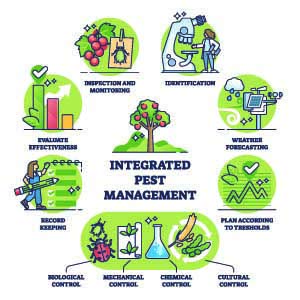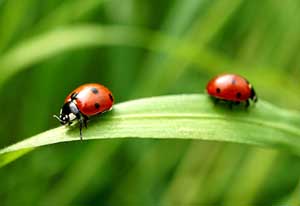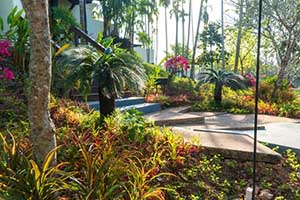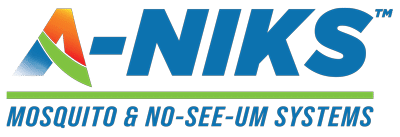Practical Measures to Achieve Responsible Pest Control – Part 2
In Part 1 of our article on responsible pest control, we underlined why it seemed important to us to avoid fighting the growth of insect populations in Florida with the wholesale use of broad- spectrum insecticides.
In this second part of our article, we offer practical and natural methods for effective pest control, from the decisions we make when faced with nuisances, to the type of flowers we can plant to keep mosquitoes away from our homes.
Protecting non-target insects
Based on our experience, common sense, and the available reseach on the topic of environmentally friendly pest control, we put together a series of 10 measures pest control companies and homeowners can implement to protect non-target insects.
- Using selective pesticides: Use insecticides that are specific to the target pest. For example, Bt (Bacillus thuringiensis) is specific to caterpillar pests and won’t harm beneficial insects.
- Spot treatment: Instead of spraying an entire area, apply pesticides only to the specific locations where pests are present. This reduces the chances of non-target insects coming into contact with the pesticide.
- Avoiding broad-spectrum pesticides: Broad-spectrum insecticides kill a wide range of insects. Instead, opt for narrow-spectrum or targeted pesticides that only affect the intended pest.
- Timing applications correctly: Apply pesticides during times when non-target insects are least active. For instance, many beneficial insects are active during the day, so consider evening applications when targeting nocturnal pests.
- Using non-toxic alternatives: Consider using insecticidal soaps, diatomaceous earth, or neem oil which are less harmful to non-target insects.
- Deploying physical barriers: Use row covers or netting to protect plants from pests. This prevents the need for chemical interventions and protects beneficial insects.
- Limiting the use of residual pesticides: Use pesticides with a short residual effect. This ensures that any non-target insects coming into the area after application are less likely to be harmed.
- Use insecticides which only release toxins on contact: Some insecticides can be formulated to only release on contact. They can stay on leaves and not harm any insect that’s not landing on the leaves. This reduces the threat to the other insects.
- Monitoring thresholds: Regularly monitor pest populations and only apply pesticides when the number of pests exceeds a certain threshold. This reduces unnecessary pesticide applications.
- Beneficial insect habitats: Create habitats for beneficial insects like ladybugs, lacewings, and parasitic wasps. Planting flowering plants can provide them with nectar and pollen.
 Some pest control companies train their specialists in Integrated Pest Management (IPM) techniques. This training enables them to understand at a deeper level the importance of protecting non-target insects, and the full gamut of measures that can be implemented to limit the threat to these insects.
Some pest control companies train their specialists in Integrated Pest Management (IPM) techniques. This training enables them to understand at a deeper level the importance of protecting non-target insects, and the full gamut of measures that can be implemented to limit the threat to these insects.
Responsible pest control: Pay attention to these species
Among the non-target insects to be harmed by a broad-brush use of synthetic insecticides, we should pay particular attention to these:
- Honeybees (Apis mellifera)
-
- Why: Honeybees are primary pollinators, ensuring the reproduction of many flowering plants.
- How: As they move from flower to flower collecting nectar, they transfer pollen, facilitating the process of fertilization. This not only aids in producing fruits and seeds but also ensures genetic diversity within plant populations. Additionally, honeybees produce honey.
- Ladybugs (Coccinellidae family)

-
- Why: Ladybugs are natural predators of many pests.
- How: They feed on aphids, mites, and other soft-bodied insects that can damage crops. By controlling these pest populations, ladybugs reduce the need for insecticides and help maintain a balanced ecosystem.
- Lacewings (Chrysopidae family)
- Why: Lacewings are beneficial insects known for their predatory behavior.
- How: Their larvae feed on a variety of pests, including aphids, caterpillars, and mites. Like ladybugs, they play a role in naturally controlling harmful insect populations, promoting healthier plants and reducing the reliance on synthetic insecticides.
- Parasitic wasps (Ichneumonidae and Braconidae families)
-
- Why: These wasps are parasitoids, meaning they lay their eggs inside or on a host insect.
- How: As the wasp larvae grow, they consume the host, eventually killing it. This behavior helps control populations of many pests, such as caterpillars, beetles, and aphids. They are invaluable in integrated pest management systems.
- Ground beetles (Carabidae family)
-
- Why: Ground beetles are voracious predators.
- How: They feed on a variety of pests, including slugs, snails, and cutworms. Active mainly at night, they patrol the ground, reducing the number of harmful insects and helping maintain a balanced soil ecosystem.
- Butterflies and moths (Lepidoptera order)
-
- Why: Beyond their aesthetic appeal, they play a role in pollination and serve as an essential food source for many predators.
- How: As adult butterflies and moths feed on nectar, they aid in pollination. Their caterpillar stage provides food for birds, spiders, and other predators. Additionally, the presence or absence of specific butterfly or moth species can serve as indicators of environmental health.
- Dragonflies and damselflies (Odonata order)
-
- Why: They are essential predators of mosquitoes and other small insects.
- How: Both the nymph (aquatic) stage and the adult stage of dragonflies and damselflies feed on mosquitoes, reducing the potential for the spread of mosquito-borne diseases. Their presence also indicates a healthy aquatic ecosystem, as they are sensitive to water pollution.
At A-Niks we observed early on that synthetic insecticides disrupt the fragile ecosystems or our region; we committed to using only natural insecticides. After attempting to find the type of natural insecticide we wanted, we resolved to create our own. We did the research and came up with a natural chemical mainly based on essential oils that offers the durable-action characteristics we were looking for. Read more about it here.
Natural ways to do responsible pest control in Florida
 Pest control should also mean preventative control. How do we prepare and take care of our backyards and gardens to limit the growth of unwanted insect populations? How do we enjoy our private spaces with thoughtful planting and landscaping?
Pest control should also mean preventative control. How do we prepare and take care of our backyards and gardens to limit the growth of unwanted insect populations? How do we enjoy our private spaces with thoughtful planting and landscaping?
Here are a few useful pointers to follow:
- Healthy soil: Maintain a healthy soil with good organic content. Healthy plants are less susceptible to pests.
- Companion planting: Some plants repel pests naturally. For instance, marigolds can deter nematodes, and basil can repel mosquitoes and flies.
- Natural predators: Introduce or encourage natural predators like birds, frogs, and beneficial insects to keep pest populations in check.
- Regular inspection: Regularly inspect plants for signs of pests. Early detection can prevent larger infestations.
- Watering: Water plants early in the morning. Wet foliage in the evening can attract pests and promote fungal diseases.
- Clean garden practices: Remove dead plants, fallen fruits, and weeds which can harbor pests.
- Physical barriers: Use floating row covers, collars, and barriers to prevent pests from reaching plants.
- Hand-picking: For larger pests like beetles and caterpillars, hand-picking can be an effective method of control.
- Avoiding chemical fertilizers: Over-fertilization, especially with nitrogen-rich fertilizers, can attract pests. Use organic compost and manure instead.
Protecting the future of Florida
It has become abundantly clear since the pandemic that Florida was a destination of choice for more and more Americans. But the constant flow of new residents has long-term consequences for the environment and the population of insects, good or “bad”.
If we want our state to remain a haven for all, we need to be mindful of our actions in dealing with the environment and its natural resources. Insects are part of these. Whether we like them or not, whether they bother us or not, we have a responsibility to protect those that are beneficial for our ecosystems — and contribute to our enjoyment of the land. A world without bees and ladybugs would be extremely sad and dangerous.
Responsible pest control is an attitude towards the environment, and it requires a bit of effort. But the payoff is worth it. A-Niks participate in this movement. We hope this information is useful and you will join us in our effort. If you need responsible pest management, call us at (877) 966-2483.
Additional resources:
Integrated Pest Management applied to gardens and backyards – Research study
Protecting Non-Target Insect Species in Florida (Part 1 of this article)


